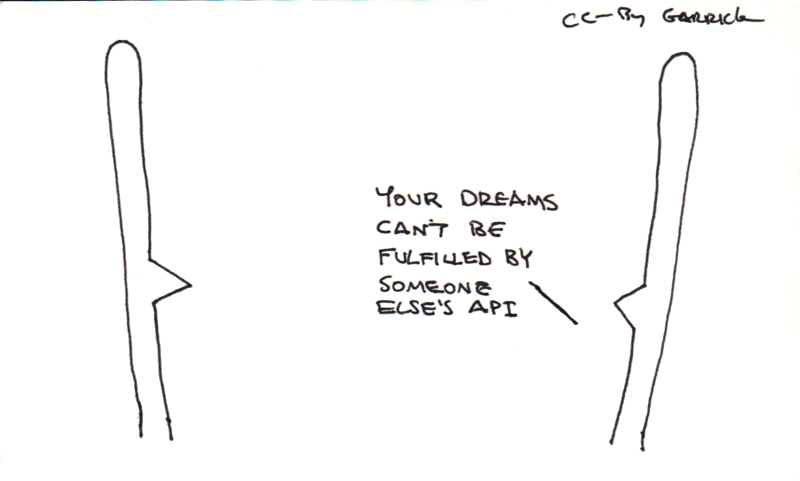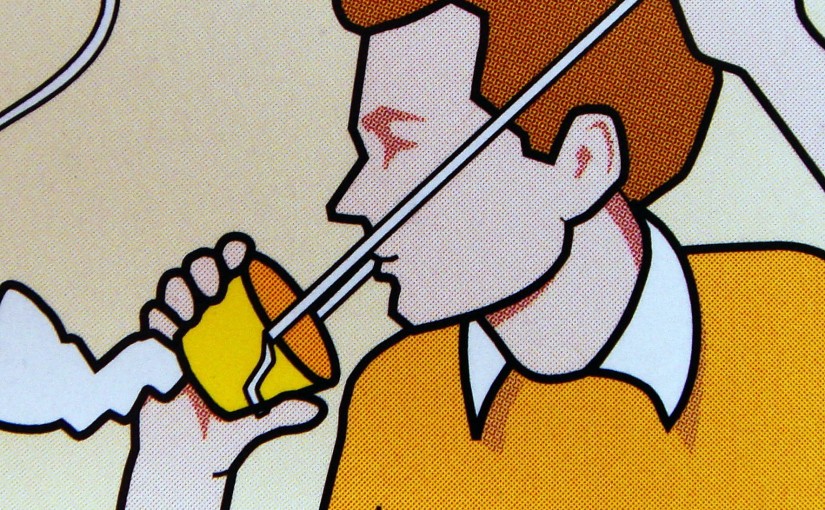I recently returned from four refreshingly long days in Lutsen along the beaches of Lake Superior’s north shore. The weather was warm and calm enough to spend one of the mornings in a kayak. After scooting along the shoreline, our tour guide led us out in to the lake, far enough out that the shore …
Category Archives: Work
What My High School Art Teacher Taught Me About Business
Unlike every other class in high school, I remember art class being completely self-directed. Yes, in English I could choose which book I wrote a 3-page report on and in History I could choose whether or not I paid attention at all, but it was art where I felt I could wholly and completely pursue …
Continue reading “What My High School Art Teacher Taught Me About Business”
How I Learned to Get Up Before My Kids
Despite a bad habit of staying up until 2am most nights, I hadn’t used an alarm clock for at least 6 years. Likely a decade. When I was up that late actively working on a project (versus binge listening to music or watching Netflix), I’d joke my ‘second day’ was from 8pm – 2am. Yes, …
Where’s Your Buyer Platform?
A few weeks ago, I met with a local small business owner. We first met back when we were both solo and have met for coffee every 6 months or so since. He now maintains an office downtown full of employees. Towards the end of our time together, he asked which social media services I …
No Client Work Before Lunch
Patrick and I have been meeting for a Monday morning coffee for years now. It’s an excellent way to start the week. As good as it is, it still fell by the wayside when my new daughter was born. Once we reconvened, he asked me what I found valuable about our conversations. Without thinking I …
Why Are You
I’m writing this from the wonderful, artful park a couple miles north of my house. It’s close enough that I could – and really should – spend a little bit of everyday here. Yet, this is the first time in more than a year I headed up here alone to work. In college I knew …
Things I Assumed I Needed to Start a Consulting Business
Days into starting my own business, I sat down at my newly acquired desk and wrote down a list of things. Things I assumed I needed to purchase immediately to be in business. While I lost the list at some point in the past decade, I remember three things about it; it totaled more than …
Continue reading “Things I Assumed I Needed to Start a Consulting Business”
What The Princess Bride Can Teach Independent Consultants
I’ve frequently joked that I take much of my approach to working as an independent consultant from The Princess Bride. Knowing all jokes are half true, Patrick Rhone asked me for the punch line. Here are six: “Let’s look on the bright side: we’re having an adventure, Fezzik, and most people live and die without …
Continue reading “What The Princess Bride Can Teach Independent Consultants”
3 Principles of Success for Independent Professionals
Garrick, Hi! I’ve heard about you for a few years now (originally from Richard Fink), and have enjoyed reading your blog posts. As a web designer who’s striking out on his own to learn programming and build his own business, do you have any advice? Cheers! – Josh For the past decade, I’ve been working …
Continue reading “3 Principles of Success for Independent Professionals”
By Contrast
“Life lasts a long time. You can disappear or be useless for weeks. If you are coming off several years of hard work, you can disappear and be useless for months… and the only impact that it will have on your success is that it will make you more successful.” – Bryan Goldberg


